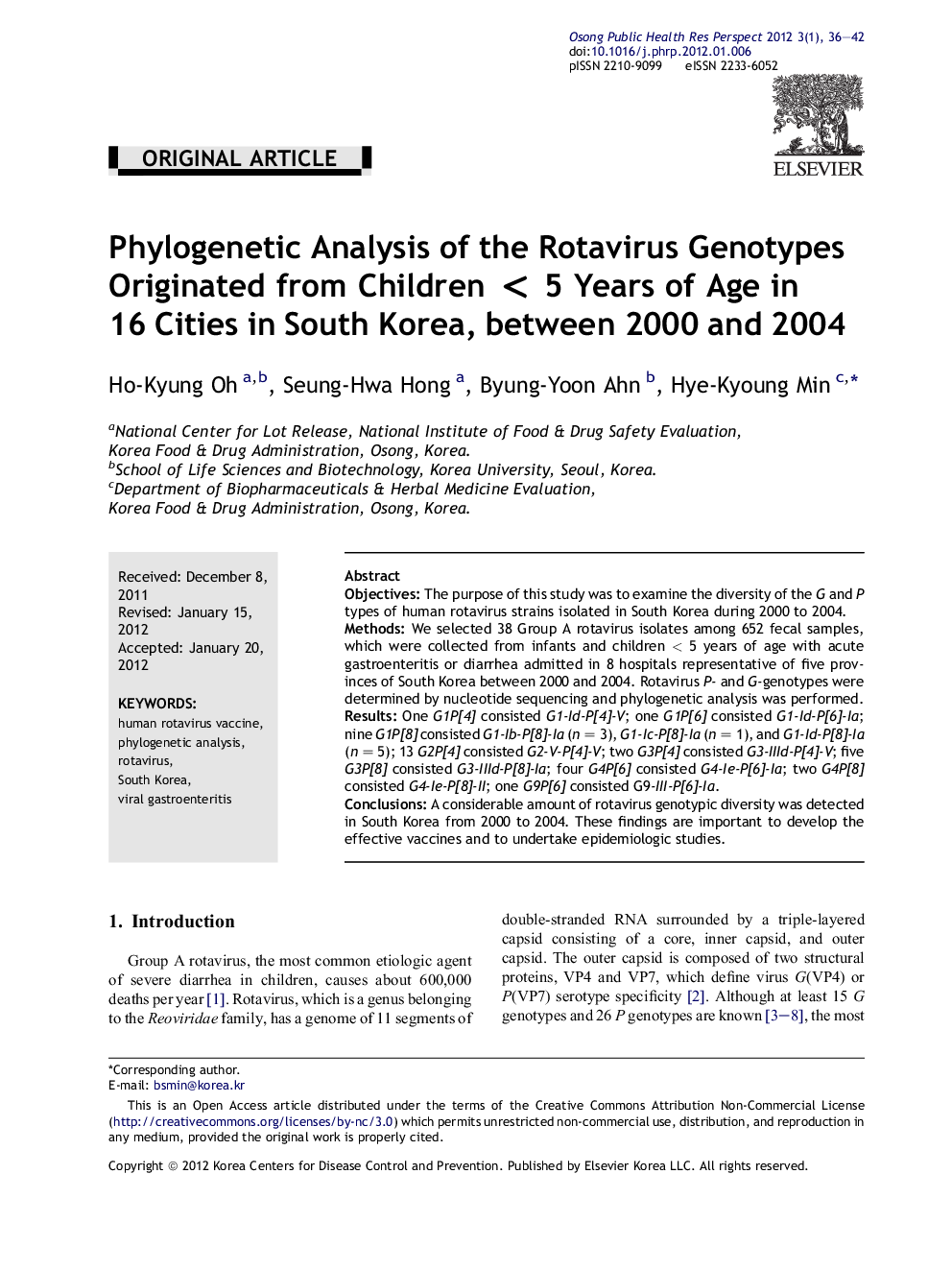| Article ID | Journal | Published Year | Pages | File Type |
|---|---|---|---|---|
| 4202119 | Osong Public Health and Research Perspectives | 2012 | 7 Pages |
ObjectivesThe purpose of this study was to examine the diversity of the G and P types of human rotavirus strains isolated in South Korea during 2000 to 2004.MethodsWe selected 38 Group A rotavirus isolates among 652 fecal samples, which were collected from infants and children < 5 years of age with acute gastroenteritis or diarrhea admitted in 8 hospitals representative of five provinces of South Korea between 2000 and 2004. Rotavirus P- and G-genotypes were determined by nucleotide sequencing and phylogenetic analysis was performed.ResultsOne G1P[4] consisted G1-Id-P[4]-V; one G1P[6] consisted G1-Id-P[6]-Ia; nine G1P[8] consisted G1-Ib-P[8]-Ia (n = 3), G1-Ic-P[8]-Ia (n = 1), and G1-Id-P[8]-Ia (n = 5); 13 G2P[4] consisted G2-V-P[4]-V; two G3P[4] consisted G3-IIId-P[4]-V; five G3P[8] consisted G3-IIId-P[8]-Ia; four G4P[6] consisted G4-Ie-P[6]-Ia; two G4P[8] consisted G4-Ie-P[8]-II; one G9P[6] consisted G9-III-P[6]-Ia.ConclusionsA considerable amount of rotavirus genotypic diversity was detected in South Korea from 2000 to 2004. These findings are important to develop the effective vaccines and to undertake epidemiologic studies.
